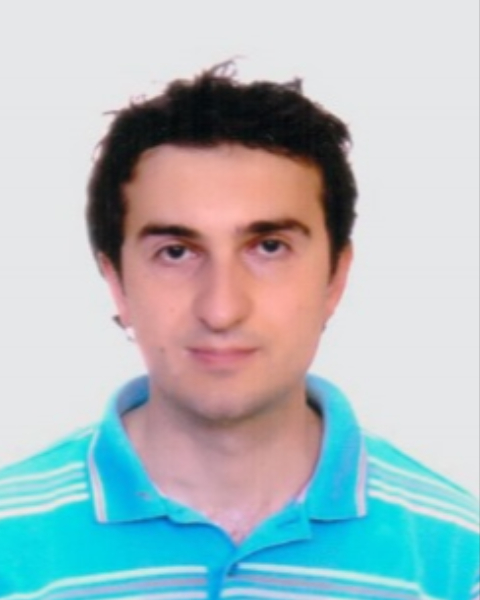PQA 07 - PQA 07 Gastrointestinal Cancer and Sarcoma/Cutaneous Tumors Poster Q&A
2950 - Dosimetric Factors Linked to Postoperative Pulmonary Complications and Intensive Care Unit Stay in Locally Advanced Esophageal Cancer Patients Undergoing Preoperative Chemoradiotherapy
Tuesday, October 1, 2024
12:45 PM - 2:00 PM ET
Location: Hall C
Screen: 17

Barbaros Aydin, MD
Izmir, Turkey
Presenter(s)
B. Aydin1, V. Semiz1, S. Onder1, K. Atila2, S. Derici3, T. Yavuzsen4, and I. B. Gorken1; 1Dokuz Eylul University Department of Radiation Oncology, Izmir, Turkey, 2Dokuz Eylul University Department of General Surgery, Izmir, Turkey, 3Dokuz Eylul University Department of Gastrointestinal surgery, Izmir, Turkey, 4Dokuz Eylul University Department of Medical Oncology, Izmir, Turkey
Purpose/Objective(s): This study aims to identify the most reliable dosimetric predictors for pulmonary complications and prolonged intensive care unit (ICU) stays following neoadjuvant chemoradiotherapy (NACRT) and surgery for locally advanced esophageal cancer. Materials/
Methods: We retrospectively reviewed the medical records of 32 patients with esophageal cancer who received surgery following NACRT for locally advanced esophageal cancer from January 2014 to June 2023. Following the completion of NACRT, all patients received transthoracic esophagectomy with lymphadenectomy. Before surgery, all patients were evaluated in terms of American Society of Anesthesiology (ASA) classification, COPD status, and hematological values. The levels of complications were evaluated with the comprehensive complication index (CCI). The patients radiotherapy (RT) plans were evaluated retrospectively, and lung V5, V10, V15, V20, V30, and mean lung dose (MLD) data were obtained using dose-volume histograms. The effect of this data on the need for postoperative intensive care (IC) and the occurrence of pneumonia was calculated using binary logistic regression analysis. The impact of categorical clinical features on the requirement for IC and the occurrence of postoperative pneumonia was assessed using the Fisher’s exact test.
Results: The median age was 58 (range, 26–77), and the median interval between NACRT and surgery was 5 weeks (range, 4–14). The RT dose was median 45 Gy/25 fractions (range, 41.4-50.4) with 1.8–2.0 Gy daily per fraction, and 87.5% of patients received FOLFOX as concurrent chemotherapy. Neoadjuvant chemoradiotherapy was applied to 8 (25%) of the patients using 3D conformal, 20 (62.5%) using VMAT, and 4 (12.5%) using the hybrid (3D-IMRT) technique. The median ASA score before surgery was 2 (1-3). Only in 1 (3.1%) patient, the score was 3. Before surgery, three (9.4%) patients were diagnosed with COPD, and one (3.1%) patient had grade 2 neutropenia. Intensive care was required in 14 patients after surgery. Postoperative pneumonia occurred in 12 (37.5%) patients. The median postoperative CCI value of the patients was 22.6 (range, 0–100). Lung median V5, V10, V15, V20, V30, and MLD doses were 65.75 (28.2-95.9), 40.5 (22.4-90.6), 29.55 (13.4-45.9), 18.10 (7.6-30.6), 7.50 (2.9-24.7), and 1126.8 cGy (263-1628), respectively. The impact of preoperative COPD presence on postoperative pneumonia and IC needs was not found to be statistically significant (p = 0.274 and p = 0.596). In multivariate analyses, lung V5 (p = 0.042), V10 (p = 0.037), and V15 (p = 0.049) doses statistically significantly affected the need for IC.
Conclusion: Lung volume exposed to low-dose radiation (V5-V15) was found to be strongly associated with prolonged intensive care unit stay after surgery for locally advanced esophageal cancer. More comprehensive studies are needed on this subject.
Purpose/Objective(s): This study aims to identify the most reliable dosimetric predictors for pulmonary complications and prolonged intensive care unit (ICU) stays following neoadjuvant chemoradiotherapy (NACRT) and surgery for locally advanced esophageal cancer. Materials/
Methods: We retrospectively reviewed the medical records of 32 patients with esophageal cancer who received surgery following NACRT for locally advanced esophageal cancer from January 2014 to June 2023. Following the completion of NACRT, all patients received transthoracic esophagectomy with lymphadenectomy. Before surgery, all patients were evaluated in terms of American Society of Anesthesiology (ASA) classification, COPD status, and hematological values. The levels of complications were evaluated with the comprehensive complication index (CCI). The patients radiotherapy (RT) plans were evaluated retrospectively, and lung V5, V10, V15, V20, V30, and mean lung dose (MLD) data were obtained using dose-volume histograms. The effect of this data on the need for postoperative intensive care (IC) and the occurrence of pneumonia was calculated using binary logistic regression analysis. The impact of categorical clinical features on the requirement for IC and the occurrence of postoperative pneumonia was assessed using the Fisher’s exact test.
Results: The median age was 58 (range, 26–77), and the median interval between NACRT and surgery was 5 weeks (range, 4–14). The RT dose was median 45 Gy/25 fractions (range, 41.4-50.4) with 1.8–2.0 Gy daily per fraction, and 87.5% of patients received FOLFOX as concurrent chemotherapy. Neoadjuvant chemoradiotherapy was applied to 8 (25%) of the patients using 3D conformal, 20 (62.5%) using VMAT, and 4 (12.5%) using the hybrid (3D-IMRT) technique. The median ASA score before surgery was 2 (1-3). Only in 1 (3.1%) patient, the score was 3. Before surgery, three (9.4%) patients were diagnosed with COPD, and one (3.1%) patient had grade 2 neutropenia. Intensive care was required in 14 patients after surgery. Postoperative pneumonia occurred in 12 (37.5%) patients. The median postoperative CCI value of the patients was 22.6 (range, 0–100). Lung median V5, V10, V15, V20, V30, and MLD doses were 65.75 (28.2-95.9), 40.5 (22.4-90.6), 29.55 (13.4-45.9), 18.10 (7.6-30.6), 7.50 (2.9-24.7), and 1126.8 cGy (263-1628), respectively. The impact of preoperative COPD presence on postoperative pneumonia and IC needs was not found to be statistically significant (p = 0.274 and p = 0.596). In multivariate analyses, lung V5 (p = 0.042), V10 (p = 0.037), and V15 (p = 0.049) doses statistically significantly affected the need for IC.
Conclusion: Lung volume exposed to low-dose radiation (V5-V15) was found to be strongly associated with prolonged intensive care unit stay after surgery for locally advanced esophageal cancer. More comprehensive studies are needed on this subject.
